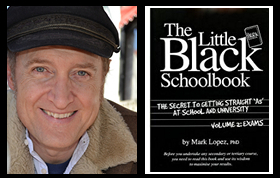Dr Mark’s The Meaning in a Nutshell
Martin Scorsese (director and screenplay co-writer) and Jay Cocks (screenplay co-writer), The Age of Innocence (1993)
Directed by Martin Scorsese and co-written for the screen by Martin Scorsese and Jay Cocks, The Age of Innocence (1993) represents Scorsese’s homage to Hollywood costume dramas and his attempt to cinematically recreate the experience of reading a great novel, namely Edith Wharton’s The Age of Innocence (1920). Faithful to the novel, the film presents a critique of the culture and values of the ruling class in New York in the 1870s. It argues that the norms, values, expectations, rituals, etiquette, traditions and other pressures towards conformity served to deny the central character, the young lawyer Newland Archer, the opportunity to find fulfilment in life by pursuing the love of his choice, Ellen Olenska, to instead end up marrying the kind of respectable woman he was expected to marry, May Welland.
It is a film about the tensions between rebellion and conformity, especially the difficulty of rebelling against the dominant culture and the immensely powerful pressures to conform. While examining this dimension of life in high society, the film, through its depiction of the love affair between Newland Archer and Ellen Olenska, provides an intricate study of the nuanced dance of surreptitious courtship, along with an equally intricate study of the way that society can exert pressures to conform without seeming to be doing anything of the sort, pressures that effectively ended Newland Archer’s love affair with Ellen Olenska.
In this context, the subtext of the film (the thoughts, feelings and desires that are rarely articulated yet motivate behaviour) becomes the key to understanding the unfolding drama. Indeed, exploring the nature of this subtext, with its resulting coded communications and intended double meanings, is one of the major concerns of the filmmakers.
The fear of scandal and excommunication from society serves to deter significant dissent. Gossip and scorn are shown to make life difficult for those who wish to contravene significant social norms. When Newland Archer pursued Ellen Olenska, he was presented with what seemed to him to be the enormous social costs of doing so. When he eventually chose May Welland he was able to sink comfortably back into the pattern of the existence that the values of his class had determined for him. He became a solid citizen and a dutiful father, yet he never felt truly fulfilled. At the end of the film, when Newland Archer reflects on his decisions and what they reveal about his character, he realises that he was more conventional and less rebellious than he once assumed, eventually describing himself as ‘old fashioned’, which means he was a man who lived according to traditions and conventions.
Although the film focuses on a male character and his suppressed desires, it also conveys a significant subtheme related to women’s liberation by promoting the right of women to be more assertive, less submissive, and to exercise their opportunities to lead more enriched and fulfilling lives.
Scorsese was also extremely keen to transport his cinema audience to another time and place, principally to New York during the 1870s, although other locations are included in the film. His production designer and costume designer went to some effort to convincingly reproduce this lavish world of wealth and privilege in all its detail. The cameras would quite deliberately dwell upon the sets and objects in the sets so that their significance is appreciated. For example, the character Ellen Olenska is depicted as more rebellious and unorthodox by the standards of her class. Hence her interest in paintings that are more avant-garde and the objects of art that adorn her home are more exotic, such as tribal artefacts. Her clothing is bolder, more colourful, more attention-grabbing to show her as more sexually assertive and to demonstrate her comfort with herself as a desirable women who herself has desires. By contrast, her rival May Welland is often dressed in virginal white and is usually depicted in settings that are geometrically ordered. This order represents her comfort with fitting in to the well-ordered world of her class whose values she does not query or contest. Meanwhile, Newland Archer’s surroundings show him to be trapped by tradition and conventionality. His dining room displays grand family portraits that denote the fact that Newland has been born into a dynasty and he has correspondingly inherited a social role that he is expected to perform. His well-stocked library reflects an interest in culture and the arts befitting an educated gentlemen of his class, yet his books also represent a rebellions streak since it conveys a love of ideas including unconventional ideas.
Student resources by Dr Mark Lopez
© Mark Lopez 2021 All RIGHTS RESERVED
The purpose of the concise notes of Dr Mark’s The Meaning in a Nutshell is to provide much needed help to students seeking to unlock the meaning of the texts with which they have to deal. (More elaborate notes are provided in lessons as part of my private tutoring business.)
Subject: The Age of Innocence meaning, The Age of Innocence themes, The Age of Innocence analysis, The Age of Innocence notes
